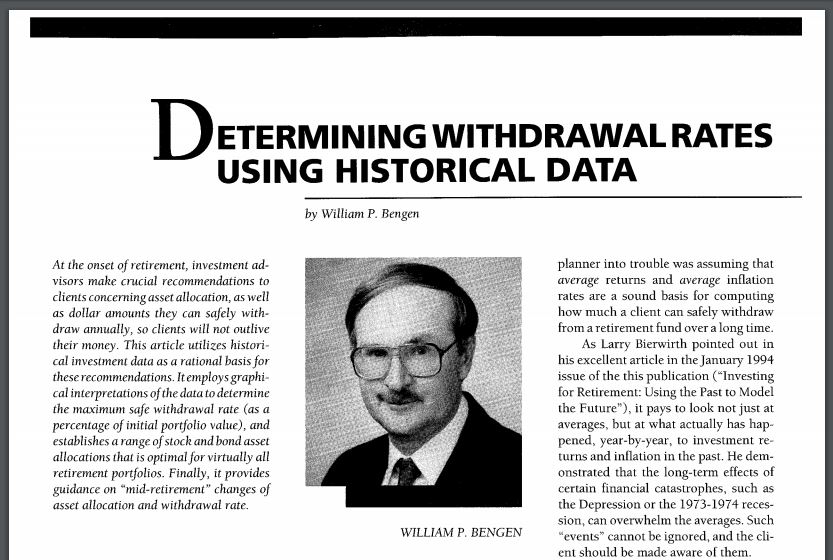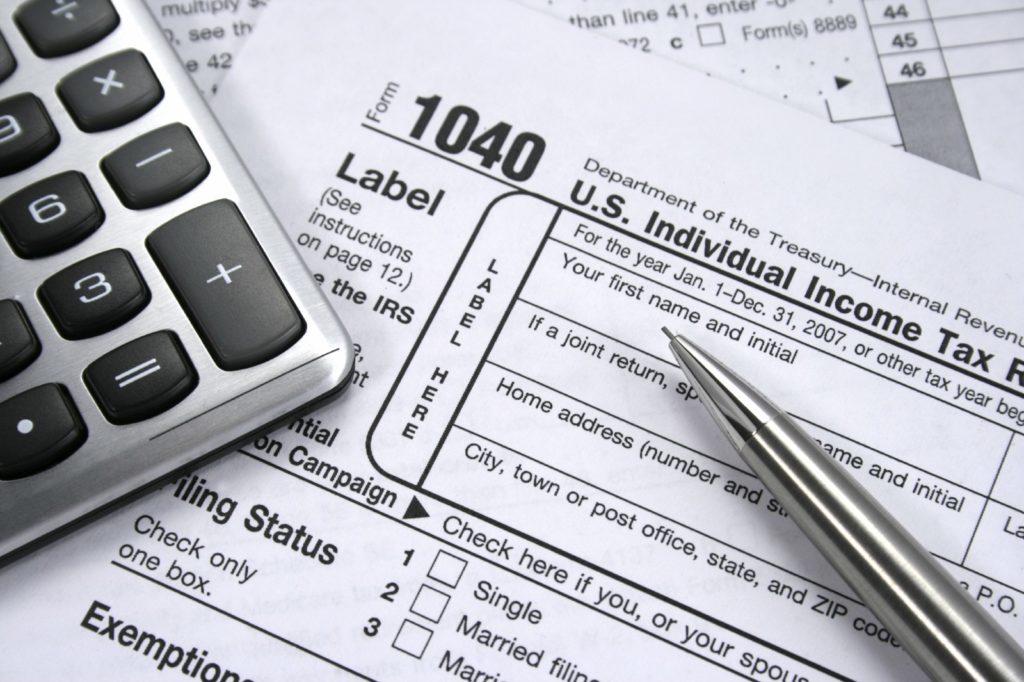When I first made the decision that I was going to retire early I had no idea where to start. So I read. I read a lot. I spent the next several years committed to teaching myself what the school had failed to teach me. How to properly plan our finances so we don’t have to work forever. I continue to learn to this day. But I have long since answered the question of how long my savings will last. The key lies within the 4% rule.
Your savings will last forever as long as you follow the 4% rule. Live within your means. Spend less than you earn. This is true of your working years and even more so in retirement. Luckily, there is another simple mathematical rule that you can follow to assure you succeed at this.
The 4% rule.
What follows is the result of my years of research and personal financial development. This is what I like to call the simplified and definitive guide to the 4% rule.
What is the 4% Rule?
The 4% rule is a guide or general rule of thumb for the safe withdrawal rate of a retiree from their nest egg. The purpose of the 4% rule is to provide the retiree with a steady annual income stream with the lowest probability of depleting funds entirely.
In simpler terms, the 4% rule aims to figure out how much money you can spend from your nest egg each year while assuring you do not run out of money before you die.
Origin of the 4% rule

In 1994, financial adviser William Bangen used historical data from the 50 year period from 1926 to 1976 to conduct a thorough study. The goal of the study was to determine the best withdrawal rates for retirees. Bengen concluded that there was no historical case during the 50 year period he studied, in which the 4% annual withdrawal rate would have exhausted a portfolio in less than 33 years.
What this means is that even in the worst case scenario from the year 1926 – 1976, if you followed the 4% rule, you would last 33 years before running out of money. So the unluckiest 56 year old to retire during those years ran out of money at age 93.
Bengen also found that in the best of years, the money would last forever. So the luckiest 30 year old retiree never had to worry about money again provided they followed the 4% rule
How does the 4% rule work?
The premise of the 4% rule seems simple enough. Withdraw 4% or less of your savings every year and never run out of money. But how does this work? You could trust the validity of past research or you could dig into it yourself to understand the inner workings. Since this is our life savings we are talking about, lets dig deeper.
On its surface, the 4 % rule makes little sense mathematically. If you have $100 and spend 4% or $4 every year, your money would be gone in 25 years. You need to factor in the interest that your money should be earning.
The stock market has historically averaged over 7% annually over the last 100 years.
Assumptions
The 4% rule assumes those historical averages will continue. So if you have One million dollars the year prior to your retirement, and you earn 7%, you will have $1,070,000 at the end of the year. If you withdraw 4% or $42,800, that leaves you with $1,027,200.
You actually end the year with MORE than you started.
You may be saying this doesn’t make sense and you are right. Why the surplus?
Inflation



Historical inflation rates in the US are universally recognized as being between 2% and 3%. For the purposes of playing it safe, we go with an estimate of 3%.
If you are earning 7% in interest annually but 3% is eaten away by inflation, that leaves 4% for withdrawals. As long as the historical averages continue to hold up, and you never withdraw more than 4%, you will never need to touch the principal. You will therefore never run out of money.
When Bengen first published his 4% rule it was, predictably, met with skepticism. I myself had a hard time believing just how simple this all could be. Markets fluctuate and inflation is never steady. I had spent so many years simply being intimidated by the overwhelming idea of figuring out my financial future. I could hardly believe it was this simple all along.
The Trinity Study



In 1998, three finance professors at Trinity University in San Antonio Texas decided to determine the validity of Bengen’s original research. Their primary concern was the irregularity with which stock s grow and/or shrink over time.
One of their main requirements for validation of Bengen’s study was that a portfolio would need to last at least 30 years without becoming fully depleted.
The authors back tested a number of withdrawal rates and investment mixes covering a period of 70 years vs. Bengen’s 50 years. they used historical stock market data from the years 1925 – 1995.
They concluded that Bengen’s results remained valid even 20 years after his original work. In their conclusion they wrote “If history is any guide for the future, then withdrawal rates of 3% and 4% are extremely unlikely to exhaust any portfolio of stocks and bonds. In those cases success seems to be assured.”
Success meaning little to no likelihood that an account following the 4% withdrawal rate would be depleted within 30 years.
The Trinity Study had used current data to validate the 4% rule. In the 20 plus years since, numerous others have duplicated the study to similar results.
Planning and the 4% rule
The authors of the Trinity Study did make one caveat in the form of the following qualification…
“The word planning is emphasized because of the great uncertainties in the sock and bond markets. Mid-course corrections likely will be required, with the actual dollar amounts withdrawn adjusted downward or upward relative to the plan. The investor needs to keep in mind that selection of a withdrawal rate is not a matter of contract but rather a matter of planning”
Basically what they were saying is that they recognize the importance of being flexible in your approach as well as the importance of the willingness to change course when required.
The 4% rule works best as a general guide, not as a concrete rule.
I have found the 4% rule an invaluable part of my plan. You can use it as a guide to in planning your monthly withdrawals from a nest egg or as a guide to determine how the size nest egg you require based on your expected annual spending.
So for example, if I want to be able to spend $100,000 a year in retirement, I can perform some simple math to determine I will need a nest egg of $2,500,000. Conversely, if based on my current savings rates I can expect to have a nest egg of $1,500,000, I know my withdrawals will be about $60,000 annually.
There are also some other factors I have researched that will impact my use of the 4% rule in retirement.
How do taxes impact your use of the 4% rule in retirement?



Your retirement nest egg will most certainly be comprised of various accounts. Some combination of a 401k plan, a Roth IRA, pension plan, savings accounts, etc. Taxes will impact some of these accounts far differently than others.
For example, if you are planning on taking withdrawals from a 401k plan, you need to be prepared to pay the income tax that you have deferred while you were making those tax free contributions. Conversely, if you have a simple savings or brokerage account you have likely already paid your income taxes on that money. You will be looking at much lower rates for capital gains or dividends then a straight income tax.
You will need to be careful when planning your safe withdrawal rate here. If you are expecting to spend $40,000 a year and that is exactly what 4% of your 401k is, you will need to make some adjustments. That $40,000 will become quite a bit less once income tax is removed.
Should I include Social Security in my 4% withdrawal rate?



One factor that neither Bengen nor the Trinity Study examined was social security. There has been no study I know of which can guide you on how to factor Social Security into your safe withdrawal rate.
My personal feelings on Social Security; If it is there for me then I will consider it a bonus after the fact. I am not including it into any of my calculations when planning for retirement.
One way to factor in Social Security; You could use historical rates to estimate what your monthly payout will be. You can then then add it to your 4% withdrawal.
Final thoughts – Does the 4% rule really work?
In this article I have defined what the 4% rule is and explained its origins. You should now have a good understanding of how it is intended to be used. Also, its place is in history with financial experts. But does it really work?
The answer to the question does the 4% rule really work is that it is entirely up to the user. If used correctly, the 4% can clearly give the user a safe rate of withdrawal that will allow them to feel a sense of security throughout retirement that their funds will never be depleted prematurely.
There are numerous variables that each individual will need to take in to account when deploying any retirement plan. The 4% rule is as solid, as any I have ever seen. in fact it is the most solid. Backed by over 100 years of data and numerous studies at the university level.
What is important is that you are thinking about this ahead of time. Furthermore, you must be doing everything you can to plan now so you won’t regret it later. You are in full control of the type of retirement you have. Weather you want to save an enormous nest egg and live it up in retirement with large annual distributions or you are trying to get out of the rat race as young as possible and are willing to sacrifice luxury and live a life of frugality, the 4% rule can help you.
Final Conclusion
Does the 4% rule work? Absolutely, unequivocally, YES!
If you are following it’s intended use and making adjustments as you go, you should be able to use the 4% rule to assure you will never run out of money in retirement.
As always, thanks for reading and happy planning
Earl